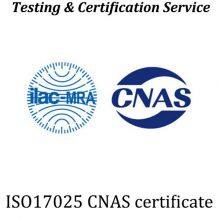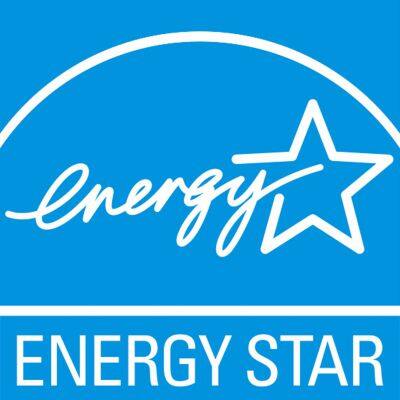Home > Products > USA > How Electronic and Home Appliances Get High-efficiency and Environmentally Friendly Labels
How Electronic and Home Appliances Get High-efficiency and Environmentally Friendly Labels
- T/T L/C PayPal D/P Western Union Other
You May Like
-
Argentina IRAM Certification Safety and Performance Testing of Solar Products
-
EU PED Directive: 2014/68/EU (PED) EC Type
-
?The CCC Certification Model for Mobile Power Supplies, Lithium-ion Batteries and Battery Packs Has Been Adjusted
-
UK ROHS Certification Regulation Requirements
-
CCC Certification Master Four Steps and Three Points to Pay Attention To, CCC Certification Problems Can be Easily Solved!
-
EU Certification | EN 18031 RED Cybersecurity
Product Description
Interpretation of the US Energy Star Energy Efficiency Certification: How Electronic and Home Appliances Get High-efficiency and Environmentally Friendly Labels
Globally, environmental protection and energy efficiency issues are increasingly valued, and the US Energy Star certification, as an internationally recognized energy efficiency standard, provides authoritative endorsement for the high-efficiency and environmentally friendly performance of electronic and home appliances. This article will deeply interpret the core content, application process and significance of Energy Star certification to enterprises and consumers, and help readers understand how to achieve green upgrades of products through this certification.
Background and significance of Energy Star certification
The Energy Star project was launched by the US Environmental Protection Agency (EPA) in 1992 to reduce energy consumption and greenhouse gas emissions by promoting high-efficiency products. Today, this label has become an important symbol for consumers to identify energy-saving products. Products that have obtained Energy Star certification can not only reduce users' energy expenses, but also reduce the impact on the environment, which is in line with the trend of global sustainable development.
Core standards and requirements of certification
Energy Star certification covers a variety of categories including home appliances, electronic equipment, lighting products, etc. Its core standards include:
1. Energy efficiency performance: Products must achieve the top 25% energy efficiency level among similar products. For example, the energy consumption of household appliances such as refrigerators and air conditioners must be lower than the industry average.
2. Environmentally friendly design: Products must meet environmental requirements such as low pollution and recyclability. Some categories must also meet restrictions on hazardous substances (such as the RoHS directive).
3. Third-party testing: Applicants must pass EPA-approved laboratory testing and submit a complete data report.
Detailed explanation of the application process
1. Determine the product category: First, you need to confirm whether the product is covered by Energy Star and check the corresponding technical specifications.
2. Laboratory testing: Choose an EPA-approved third-party laboratory to conduct energy efficiency testing to ensure data accuracy.
3. Submit an application: Submit the test report and other required documents through the Energy Star official website.
4. Audit and certification: After passing the EPA audit, the company can use the Energy Star label and accept regular spot checks.
Value to Businesses and Consumers
- Business perspective: Certified products are more likely to be favored by government procurement and retailers, while also improving brand image. For example, some states in the United States offer tax incentives for Energy Star products.
- Consumer perspective: Products with the Energy Star label have lower annual energy consumption, which can save hundreds of dollars in electricity bills over the long term.
Challenges and responses
Despite the significant benefits of certification, high testing costs and complex processes can hinder small and medium-sized enterprises. In response, EPA provides technical support and cooperation programs to help companies lower the threshold.
Future trends
With the development of smart home and IoT technologies, Energy Star is expanding its certification scope to smart home appliances and connected devices, further promoting energy efficiency innovation.
In summary, Energy Star certification is not only the "gold standard" for product energy efficiency, but also an important step for companies to move towards a green economy. Through compliance applications and continuous optimization, electronic and home appliance products can stand out in a highly competitive market while contributing to global environmental protection.
Contact Us

- Shenzhen Lcs Compliance Testing Laboratory Ltd.
- Contact nameleo tu Chat Now
- Address1&2/F, Building A, Juji Industrial Park, Yabianxuezhiwei, Shajing Street, Bao'an District, Shenzhen, Guangdong, China, Shenzhen, Guangdong
Product Categories
New Products
-
Taiwan NCC Certification (RF, SAR, Telecom)
-
Taiwan BSMI Certification (Safety & EMC & ROHS)
-
Australian RCM Certification/RCM Registration/RCM Logo
-
FCC ID Certification for Bluetooth Headphones
-
GCC Certification: Attention, Companies Exporting Toys and Electrical Appliances! A Must-have for Exporting to the Middle East
-
Interpretation of the Withstand Voltage Test in IEC 60335-1:2020
-
AC Charging Pile European Certification
-
New National Standard for Chargers (GB42296-2022)
-
French WEEE Registration/French Packaging Law/EPR
-
How Can I Check the Validity Period of EU CE Certification Harmonized Standards?
-
EU REACH Chemical Testing Process for Chargers
-
?How do I Apply for UL2849 and GCC Testing for Amazon's US Electric Bicycles?
-
How do I Apply for EU CE Certification Under the EN62133 Standard for Emergency Power Supplies and Energy Storage Power Supplies?
-
Saudi Arabia's New Energy Efficiency Standard, SASO 2902:2018/AMD2:2023, Will be Mandatory on June 1, 2025.
-
The Australian Government Officially Released the Cybersecurity (Smart Device Security Standards) Rules 2025
-
The REACH Substances of Very High Concern (SVHC) List Has Grown to 250 Items!
-
The IECEE Officially Released the Safety Testing Standard for Button-type Lithium Batteries, IEC 60086-4:2025.
-
On April 9, 2025, Canada's NRCan Published New Energy Efficiency Regulations for General Service Lamps (GSLs)
Popular Searches
- a.1. inspect
- activate software
- all check
- all inspect
- aluminum check
- an check
- app develope
- bag inspect
- bag inspection
- bags reporter
- be audition
- be reporter
- bende inspection
- best audition
- best audit
- best report
- blue auditing
- boy check
- brands audition
- cable inspection
- care inspection
- coates inspection
- consultative service
- cool inspection
- check weigh
- decorating auditing
- design sevice
- digital audit
- direct audit
- distributor computational
Recommended Products
- How to Obtain FCC Certification for a Robot Vacuum
- How to Obtain FCC ID Certification for a WiFi Jammer
- The UL Report Process for Power Banks
- How to Obtain FCC Certification for Floating Lights?
- Application Process for an FCC ID for an Action Camera
- How do I Obtain Battery WEEE Certification, and How Long Does it Take?
- What is the Difference Between KC and KCC Certifications in South Korea?
- How to Apply for CE Certification and Testing for Display Screens
- Do Energy-saving Lamps That Have Already Obtained CE Certification Still Need ERP Energy Efficiency Certification?
- ?Bluetooth Speaker CE Certification Process
- Bluetooth Headset NBTC Certification Process
- CTA Network Access Permit Application Process and Required Documents
Find Similar Products By Category
- Service > Commercial Service > Other Commercial Service
Product Tags:
- Please Enter your Email Address
- Please enter the content for your inquiry.
We will find the most reliable suppliers for you according to your description.
Send Now-
 leo tu
Hi there! Welcome to my shop. Let me know if you have any questions.
leo tu
Hi there! Welcome to my shop. Let me know if you have any questions.
Your message has exceeded the limit.

- Contact supplier for lowest price
- Customized Request
- Request Sample
- Request Free Catalogs
Your message has exceeded the limit.
-
Purchase Quantity
-
*Sourcing Details
Your inquiry content must be between 10 to 5000 characters.
-
*Email
Please enter Your valid email address.
-
Mobile



